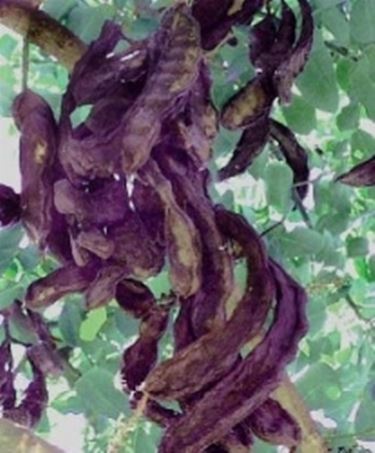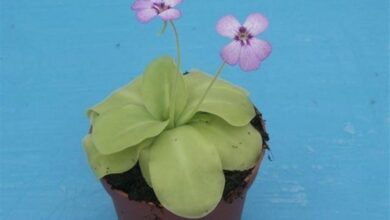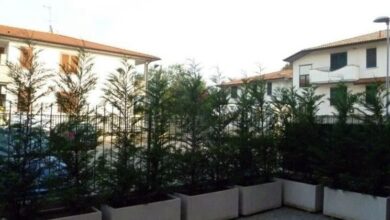Carrubo – Ceratonia siliqua

Generality
It is a very long-lived plant, up to 15 m tall, with slow growth and an expanded habit, in fact the crown can reach a diameter of 10 m; the stem is furrowed and branched.
In the upper part of the plant the branches have a tendentially upward bearing, while on the outside they have a more open insertion angle. The roots develop deeply and are firmly anchored to the ground, so the trees withstand the strong wind. The leaves appear in spring, are evergreen, hard, dark green, on average 15 cm long and have a synthetic photo duration of up to a year and a half.

Floral biology and fruits
The inflorescences, gathered in groups well spaced from each other, form on branches having an age greater than two years; in the points where the previous fruiting took place, the induction of the flower buds occurs.
The flowers are hermaphroditic, male or female; the pollination is entomophilous and anemophilous, in the case of specialized plants the presence of male pollinators must be at least 10%. The flowering of the carob tree is very gradual, in Sicily it lasts from August to November; the fruit is an indehiscent green siliqua, which develops in spring and ripens towards the end of summer, in this phase the fruit takes on a brown color. During the summer there are flowers and fruits on the plant at the same time.
Climate and terrain
The carob tree prefers arid and semi-arid climates as it has rusticity, resistance to drought and high temperatures, while it is better to avoid areas where winter temperatures drop below zero; the plant should be exposed in full sun. It is a species cultivated mainly in Mediterranean climates, Spain and Italy are the main world producers. In our country about 70% of the area cultivated with carob trees is located in Sicily, the remainder is divided between Puglia, Sardinia and some areas of Campania. The carob grows well on poorly fertile, calcareous and even stony soils, while it avoids too compact and humid soils.
Variety and use of the product
Carob cultivars are distinguished mainly by the size of the siliqua.
The “agriogenic” or wild varieties have short pods, having a length of 7-10 cm, small (weighing 5-10 g) and a weight percentage varying between 15 and 25%. The “hemerogenous” cultivars, the most cultivated ones, are equipped with pods 15-20 cm long, large (weighing 18-28 g) and with a weight percentage of 10%, therefore they have a low pulp / seed ratio.
Once the carobs were used for human nutrition, since the 80s there has been a renewed interest linked to the use of the seed, in fact from the endosperm thickening gums are obtained, used in the food and confectionery industry. From the pulp of the carob are obtained substances with low fat content (a substitute for cocoa) which counteract vomiting and diarrhea; it can also be used for feeding livestock. In Italy, among the wild varieties, Rizzulina is remembered, while the most important emerogeneous ones are Latinissima, Racemosa, Amele di Bari, Saccarata, Gibiliana, Moresca and Pasta.
With hermaphrodite flower cultivars such as Bonifacio, Tantillo and Greca, the presence of unproductive male pollinators is not considered essential.




